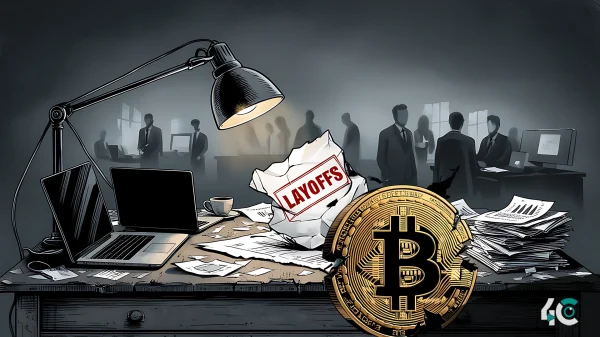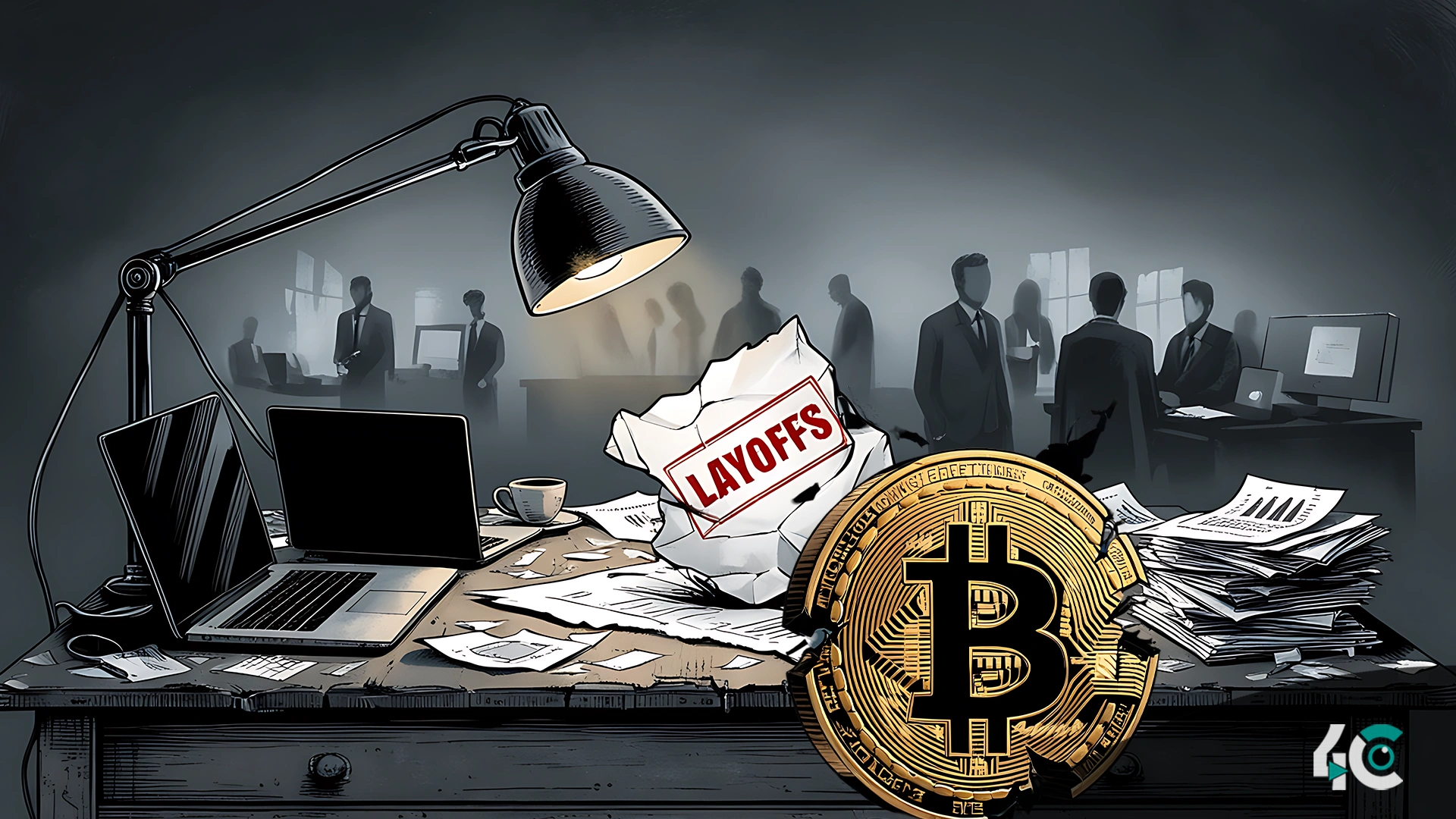Layoffs are making a comeback in the crypto industry in 2023, with several firms trimming their workforce amid market uncertainties. While some indicators hint at recovery, the recent job cuts have reignited questions about whether the crypto bear market is truly behind us
The Scale of the Problem
In the first half of 2025, more than 30,000 jobs were cut across crypto & blockchain firms, data from Crypto Job Metrics showed. Big crypto companies like Coinbase and Binance are laying off employees, while small crypto startups are closing down altogether as they have no funds left.
The CEO of Coinbase, Brian Armstrong, said that the cut was painful but necessary for one’s long-term survival. On the other hand, even after being profitable, Binance cut 15% of its staff, indicating the biggest ones are also affected.
“The prolonged bear market is showing the weakness of the structure in the industry,” says Dr. Emily Chen, an economist dealing with such digital assets. “In their over-commitment during the bull run, companies have gotten burned.”
Please explain the reasons for the current layoffs.
The layoffs have happened because of the increasing price of crypto in the 2021–2022 bull market. During that bull run, investor interest heated up. During this period, they added more staff, began ambitious projects, and raised billions in venture capital. However, as the market entered a prolonged downturn, many of these projects were unsustainable.
Several key factors have contributed to the layoffs.
As cryptocurrency prices stagnate or fall, exchanges’ main source of revenue—the trading fees—has fallen. The decline in cryptocurrency prices has resulted in significantly lower profits for many exchanges.
Governments’ increased scrutiny has forced companies to divert resources to comply with regulations, often at the expense of hiring and innovation.
Why companies hired too many employees during the boom or the bull market without considering if the demand would still be the same in lean times.
“First, it was the hype of ‘cancel culture,’ and now it is the banking industry,” said James Carter, a fintech analyst. They thought good times would be forever, but as we know, markets always correct; they are just adjusting.
The Human Impact
The layoffs have hit employees hard, many of whom joined for stable, well-paying jobs in a growing sector. Now, they find themselves facing uncertainty in a job market overflowing with talent as the tech giants downsize too. For employees in smaller cities or regions that have become reliant on blockchain startups, the impact has been intense. Cities like Austin, Miami, and Lisbon, which were thought to be emerging crypto destinations, are now feeling the effect as the local economy struggles.
“It drives you to ruin, not just to lose a paycheck but also to lose the faith in an industry you believed in up to that point,” said Sarah Lin. Many of us thought we were building the future, but it feels like the rug has been pulled from under us.
A Broader Industry Reckoning
The layoffs reveal more profound problems in the Web3 ecosystem. According to critics, speculation, rather than utility, is driving the growth of the industry, leaving the companies vulnerable. Critics claim that this means businesses are focused on quick profits rather than longer-term sustainability.
According to some experts, layoffs may help the industry by forcing firms to focus on profit and utility. Marcus Reed, the CEO of Hain Analytics, stated, “This serves as a crucial reminder.” A CEO at Vayeca said Web3 is going to have to. According to a CEO at Vayeca, Web3 must provide a compelling reason for its continued existence.
Signs of Hope Amidst the Gloom
Despite the grim outlook, there are glimmers of optimism. Some areas are still able to attract investment and do not struggle to succeed. Businesses may reap benefits when the market recovers by optimizing their operations and concentrating on their strengths. Furthermore,
Furthermore, based on history, contraction periods tend to give rise to innovation. After the dot-com crash at the start of the 2000s, survivors like Amazon and Google recreated the industries. Could the same transformation occur with Web3?
“We have witnessed such cycles earlier and have always come out stronger each time,” Dr. Chen said. “But only if we learn from our mistakes.”
What Lies Ahead?
As layoffs continue to sweep the crypto space, experts wonder whether this is a cycle of the past—or the present. Currently, whether that answer is yes or no depends on whether companies can survive the bear market.
The next phase of Web3 will need more than ambition; it will need discipline, resilience, and a more serious approach to actually solving problems. Once the dust settles, we will see if the next phase of Web3 can emerge from this bear market with confidence in its ability to deliver and make a reality what it has promised.
For the laid-off employees and investors whose confidence has been shaken, the hope is that the days to come are bright. But it will take patience and perseverance to get there.
















































